Scroll to:
Research Results of Heat and Mass Transfer in Conditions of Weak Aerodynamic Coupling with Pulsating Ventilation Mode
https://doi.org/10.23947/2541-9129-2025-9-1-22-31
EDN: CMMJGA
Abstract
Introduction. The issue of heat dissipation in metallurgy is significant due to potential hazards to personnel and the environment. Effective control and management of thermal processes require additional measures and can prevent fires, explosions, and personnel injuries as well as it is a key factor in ensuring the safety and reliability of metallurgical equipment. Metallurgical processes often involve high temperatures, but control over them is necessary for successful steel melting and processing. Current methods of heat transfer control (aeration, general exchange and local ventilation) do not always effectively reduce heat loads to acceptable levels. The choice of a pulsating ventilation mode for increasing the efficiency of heat transfer control is due to two main reasons: low air flow rates in large metallurgical production facilities, and the presence of numerous hard-to-reach areas with heat-generating equipment. The aim of this research is to investigate heat and mass transfer processes in areas with weak aerodynamic coupling with pulsating ventilation mode.
Materials and Methods. To achieve this goal, a method of physical modeling was employed to collect statistical data. Heat and mass transfer were evaluated by measuring temperature changes over time at various points in the model niche under different ventilation conditions (stationary and. pulsating). System analysis was then applied to process the collected data.
Research Results. It was found that pulsating air movement had a positive effect on heat and mass transfer in poorly ventilated spaces inside the laboratory setup. The degree of efficiency of this effect was determined, and it was found that the use of pulsating ventilation slowed down the increase in temperature in the center of the space by 3.8 times compared to the use of general forced ventilation.
Discussion and Conclusion. The data obtained under the simulated conditions of the aforementioned type of production provide a foundation for developing a more specific methodology to counteract the negative effects of heat radiation. This methodology could significantly enhance safety by improving the removal of excess heat in low-aerodynamic areas of mining and metallurgical workshops.
Keywords
For citations:
Filin A.E., Filina V.A., Tertychnaya S.V., Kurnosov I.Yu., Kolbina I.S., Pronina D.E. Research Results of Heat and Mass Transfer in Conditions of Weak Aerodynamic Coupling with Pulsating Ventilation Mode. Safety of Technogenic and Natural Systems. 2025;9(1):22-31. https://doi.org/10.23947/2541-9129-2025-9-1-22-31. EDN: CMMJGA
Introduction. Heat dissipation is an integral part of metallurgical production. Excess heat generation can cause overheating of equipment, which can lead to accidents, damage to production equipment, and injury to workers, resulting in significant financial losses. To control excess heat in the metallurgical process, several methods are used:
- Direct cooling: cooling of metal in contact with heat sink rods.
- Water cooling: the use of water to cool metal.
- Gas cooling: the use of gases to cool metal, which ensures a high level of temperature reduction [1].
- Cryogenic cooling: the use of supercooled liquid gases for heat treatment of metallic materials [2].
- Induction cooling: the creation of internal cooling using an alternating magnetic field.
Metallurgical workshops are characterized by a significant amount of heat generated during various stages of metal production, including heating, melting, molding, and casting [3]. In addition, these processes are often accompanied by the emission of dust and gases, leading to an increased concentration of hazardous substances in the air. This can complicate the working conditions for employees and require the use of specialized protective equipment, as well as the compliance with occupational safety and industrial safety requirements [4]. When working in metallurgical workshops, there is also a risk of fires, explosions, and serious thermal injuries [5].
Insufficient cooling of process installations, such as areas with a large number of power cables or local transformer substations, often causes excessive heat generation and heat accumulation, which can lead to equipment failures [6]. Therefore, it is crucial to carefully monitor temperatures at each stage of the process to ensure a stable and safe temperature condition for production facilities and electrical equipment [7]. Regular maintenance and repair of equipment, as well as monitoring of thermal radiation levels in workshops, are necessary to promptly respond to potential problems and develop strategies to address and prevent them [8]. Despite all available cooling methods, emergencies, non-standard situations, and injuries in metallurgical production remain a significant concern, although in the last ten years there has been a downward trend [9].
Analysis of the existing statistical data on accidents and injuries in the mining and metallurgical industry over the past ten years, as well as assessment of the cooling methods used, has shown the need for more effective measures to reduce thermal radiation and ensure the uninterrupted operation of equipment [10]. In this regard, the authors have developed and modeled a process of heat and mass transfer using a method of pulsating air movement, which significantly improves heat transfer with weak aerodynamic coupling [11]. The aim of this research is to study the effect of pulsating airflow on temperature parameters of air environment in conditions of low speeds and difficult aerological permeability with general ventilation in a room. The article presents the results of physical modeling of heat and mass transfer under conditions of weak aerodynamics.
Materials and Methods. The experiments on heat transfer were conducted using a physical model (Fig. 1), which had the following characteristics [12]:
- volume of the ventilated space — 1 m³;
- relative air humidity — from 26 to 28%;
- air temperature — 21–23°C [13].
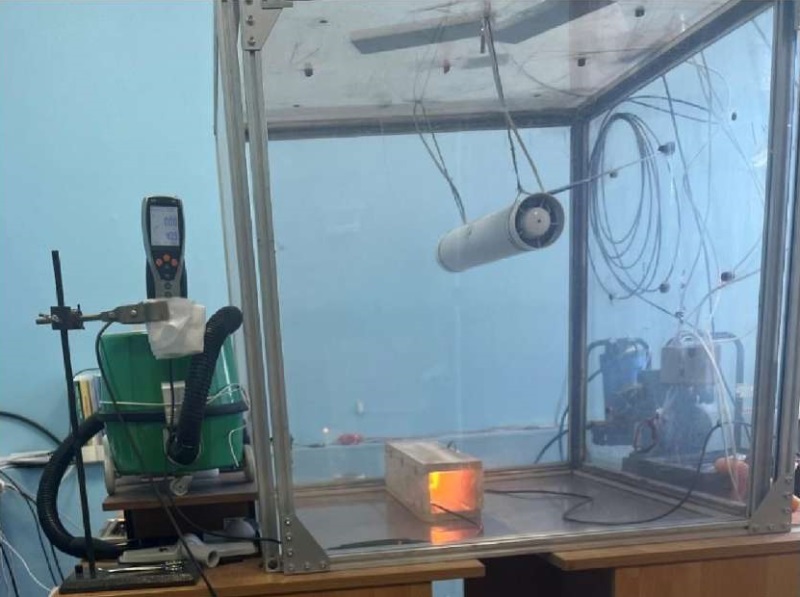
Fig. 1. External view of a laboratory installation for the physical simulation of heat transfer in a pulsating ventilation mode
Figure 1 shows a structure simulating a ventilated room in the form of a cube with sides 1 meter long. The Pulsator device was located in the central part of this volume (Fig. 2 a, 5). Its characteristics are shown below:
- the Pulsator device length — 0.57 m;
- diameter — 0.1 m;
- fan rotation speed in the Pulsator device — approximately 180 rpm;
- air consumption in the Pulsator device — 0.007 m³/s;
- flow rate of general exchange ventilation — 2.2 m/s [14].
When planning the experiment, minimum and sufficient requirements for its implementation were established [15]. Measurement accuracy:
- time — in minutes;
- temperature — 0.1°С;
- distance — 1 cm;
- pressure pulse — 1 Hz.
Figure 2 provides the diagram of the laboratory installation. The air flow generator (Fig. 2 a, 1) for general exchange ventilation, simulating the process of artificial ventilation in a room, was located on the left side at the bottom of the laboratory model (in the middle). The height distance from the base of the laboratory installation was 7 cm. The outlet of the niche (Fig. 2 a, 2), simulating a zone of obstructed aerological permeability, was in the base of a laboratory installation in the center. The niche structure itself rested against the back wall of the cube. The dimensions of the niche had the following parameters:
- height — 0.1 m;
- length — 0.5 m;
- opening width — 0.12 m;
- wall thickness — 0.012 m;
- wall material — pine.
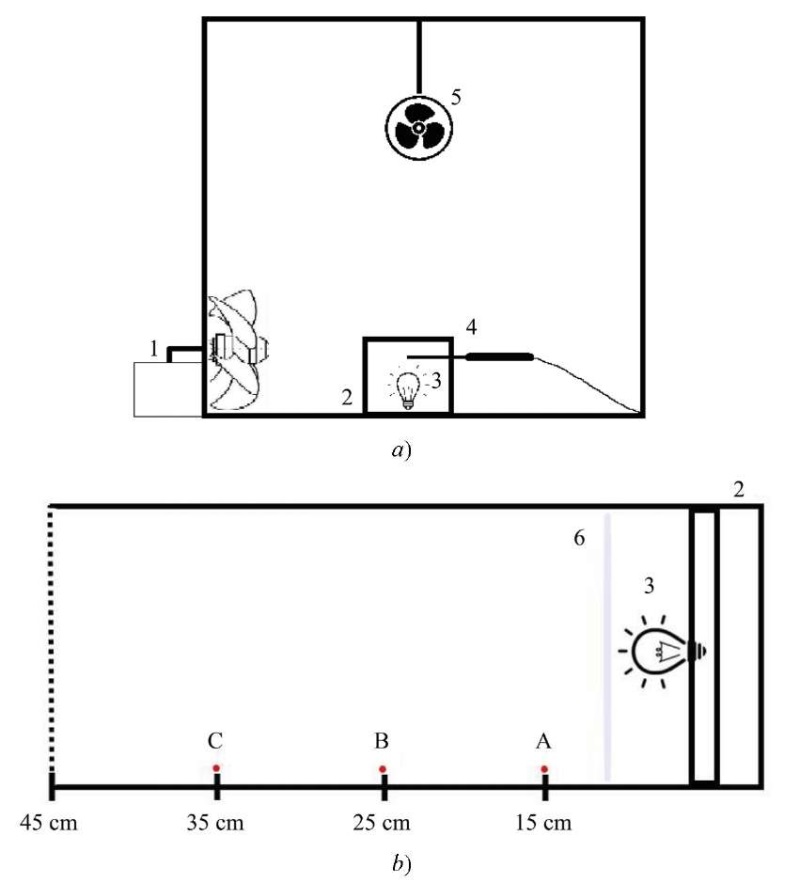
Fig. 2. Diagram of the laboratory installation for studying heat and mass transfer processes:
a — general view of the laboratory bench;
b — location of the temperature sensor, indicating the distance from the heat source;
1 — fan; 2 — niche simulating a zone of difficult aerological permeability; 3 —eat source;
4 — temperature and humidity sensor; 5 — the Pulsator device; 6 — the shielding plate
In the part of the niche farthest from the entrance, at a distance of 0.45 m, there was a heat source (Fig. 2 b, 3). The heat source was an incandescent lamp with a power of 25 watts. During the experiments, two types of heat transfer were studied: radiative and convective. Figure 2 provides the layout of the equipment during the experiment.
The experiment to study the processes of heat and mass transfer was carried out with the temperature values recorded by a sensor located on the floor of the niche at a distance of 0.15, 0.25 and 0.35 m (Fig. 2 b). The letters highlighted in red indicate the position of the temperature sensor during the experiment. The experiment was carried out both with stationary (without the use of a pulsator) air exchange and with the use of a pulsating ventilation mode. On each segment, 70 temperature values were recorded for 60 minutes. In accordance with the experimental program, as mentioned earlier, the niche was located on the basis of a laboratory installation, and the temperature sensor was located at measuring points A, B, and C (Fig. 2 b). The measurements were carried out in the lower part of the niche (near the floor).
The second stage of the research to assess the influence of the air movement pulsating mode consisted in the use of a screen that dissipated direct thermal radiation. This screen was located between the heat sources and the temperature measuring points. The screen was installed permanently in one place for all measurements. The screen dimensions were 0.1 x 0.1 m. The screen material was white plastic 0.001 m thick. Periodically, during the heating process, the Pulsator was turned on, for example, at the 18th minute of the experiment. It was noted that the Pulsator operation led to a decrease in the temperature rise in the niche at each measurement point. The measurements were performed using the same methodology.
In general, it was found that at the time of switching on the Pulsator, the temperature increase in the niche was 1.5 times less than when the device was turned off. In the future, similarity criteria would be used to scale the process of turbulent heat transfer in natural conditions.
Results. Based on the conducted experiments, graphs of the dependence of temperature changes on time were constructed. Figure 3 shows the results of these measurements. The absolute and relative errors were 4.45°C and 8%, respectively. The graph with the blue line shows temperature changes when using the screen, and the graph with the green line shows temperature changes (in the range from the 18th to the 30th minute of this stage of the experiment) when the pulsating air movement mode was turned on with the plastic screen installed.
After the experiments, relative temperature increments at each measurement point of stationary (marked in blue on the graph) and pulsating modes were calculated to compare them. After calculating the increments for different modes, the dependencies were obtained. Figure 4 shows a graph of the dependencies of temperature increment coefficient on time using the screen.
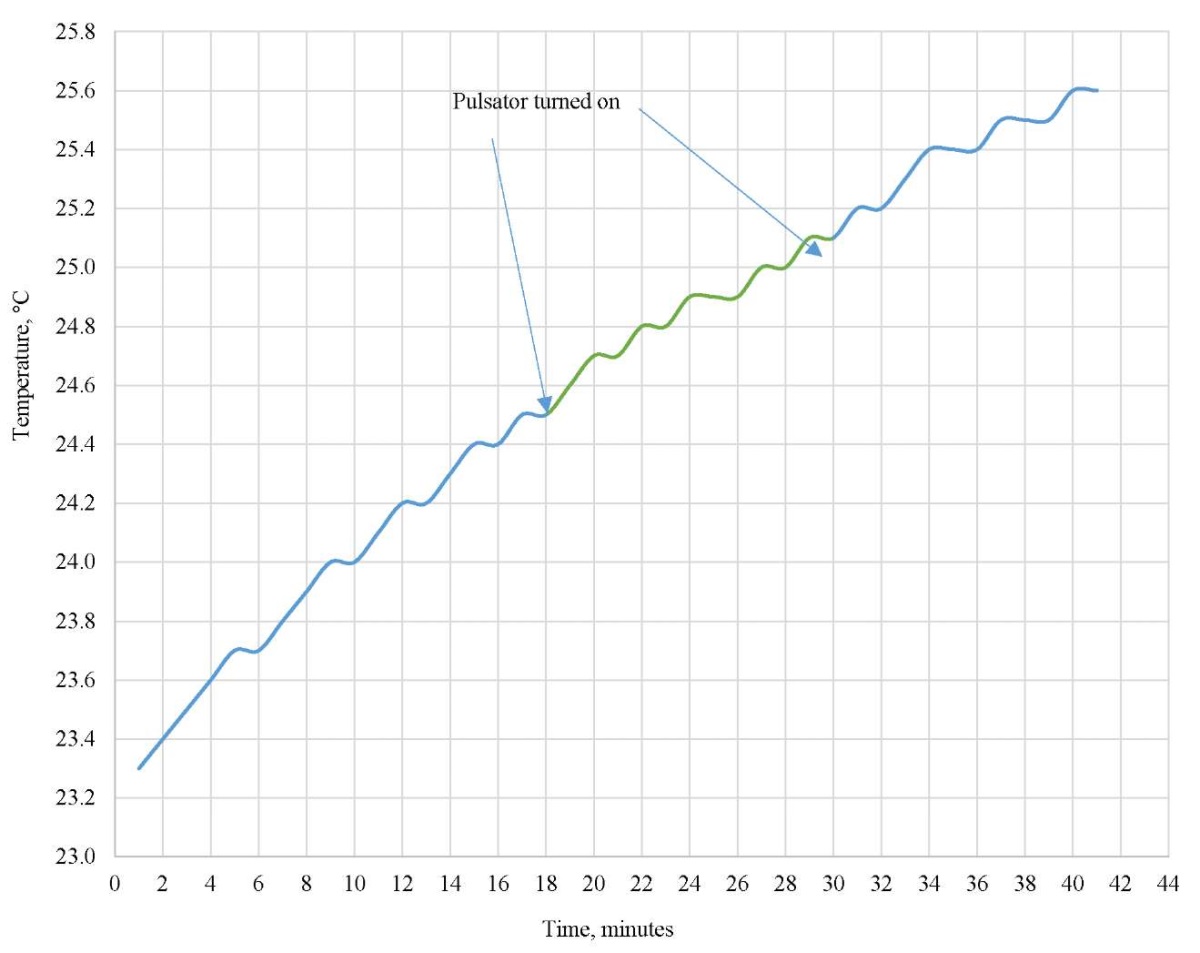
Fig. 3. Dependency graph of temperature on time of thermal radiation at a distance of 35 cm from a radiation source with an installed screen
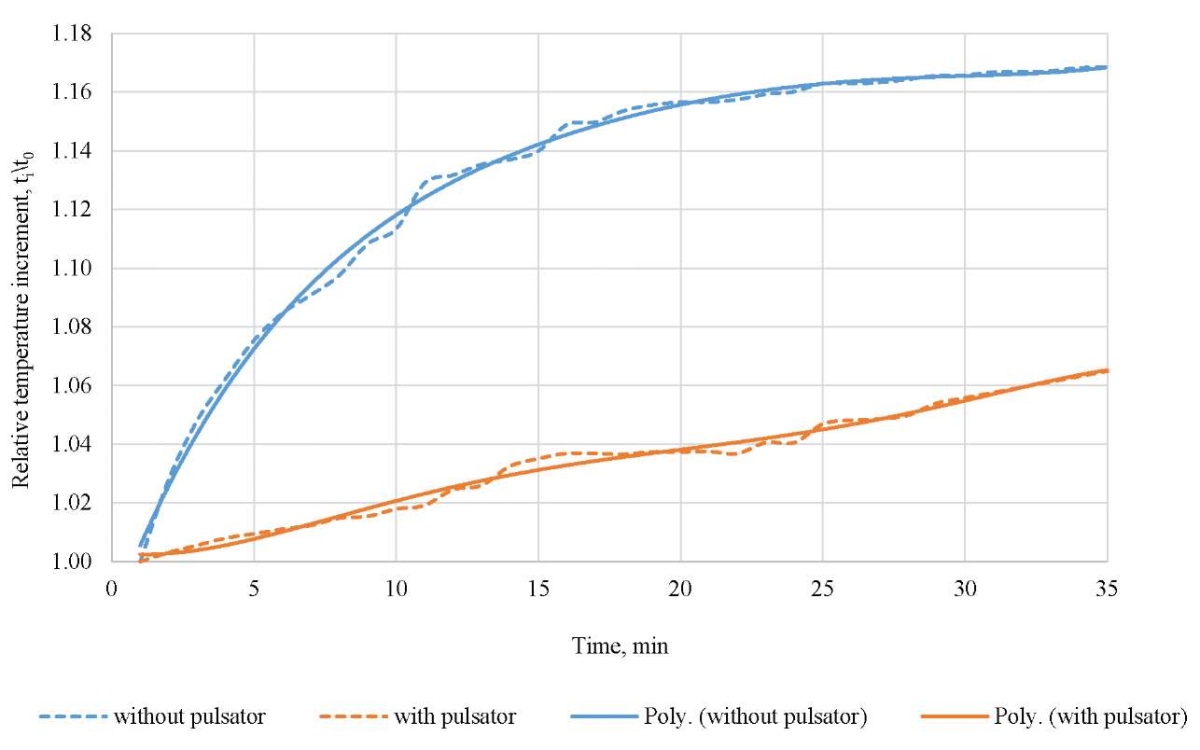
Fig. 4. Dependency graph of relative temperature increment on time at a distance of 35 cm from the radiation source using a screen
Further, these increments were distributed by modes and time ranges. Figure 5 shows dependency graphs of average values of relative temperature increment (ti\t0) on time in stationary and pulsating modes for the entire volume of the niche.
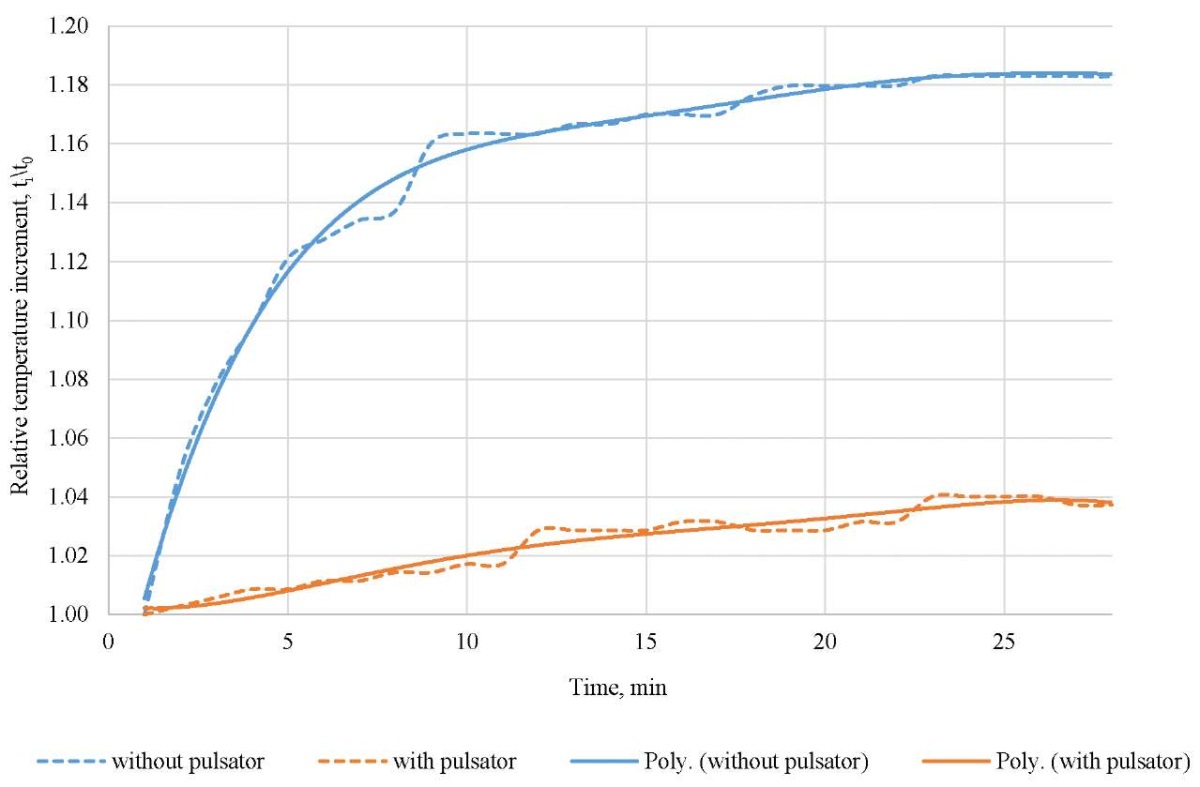
Fig. 5. Dependency graphs of averaged values of relative temperature increment on time in stationary and pulsating modes
According to this graph, during the first 15 minutes of the experiment, the temperature increased at a slower rate using the pulsating ventilation method, and there was a steady, slight increase. Under the conditions of the steady-state regime of the process under study, the maximum rate of temperature increase was observed.
Comparison of temperature changes over the intervals of 1–15 minutes and 16–32 minutes showed that during the first interval, the efficiency of the pulsating mode was less than the temperature increase (Fig. 6). However, the characteristics remained the same during the second interval (Fig. 7).
Figure 8 shows the values of angular coefficients, which indicate the degree of efficiency of the pulsating mode compared to the stationary mode, at different time intervals. In the range from 1st to 15th minute, the angular coefficient was 3.8 times higher in the stationary mode than in the pulsating mode, which indicated a higher intensity of heat and mass transfer. In the next interval (16–32 min.), this effect was not observed.
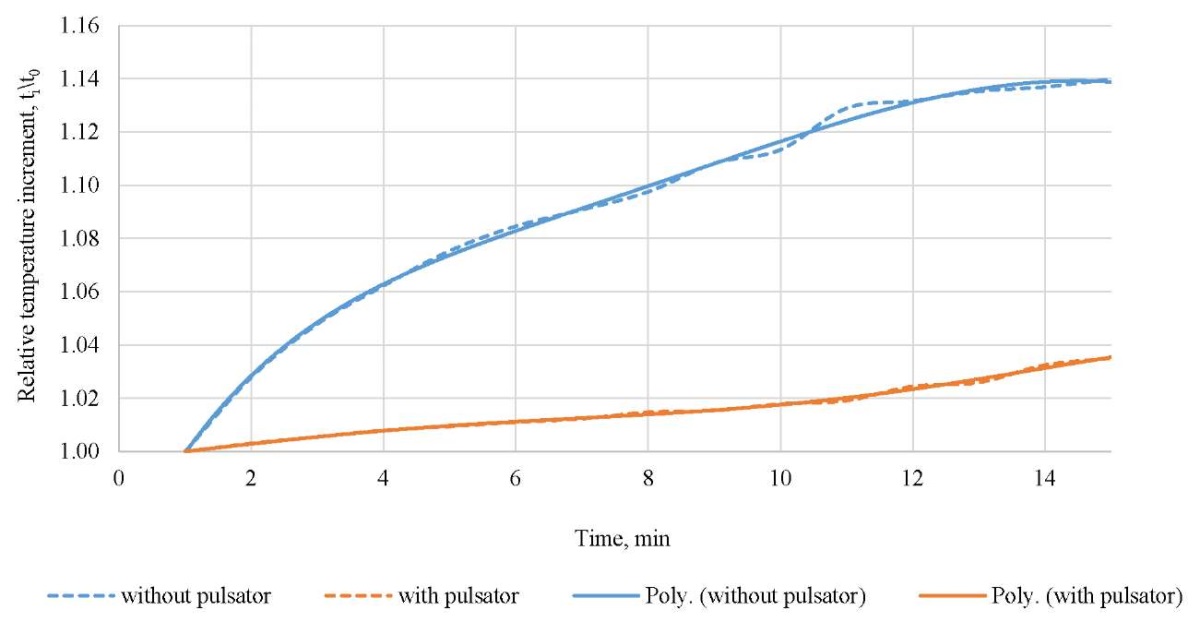
Fig. 6. Dependency graphs of the averaged values of relative temperature increment on time in stationary and pulsating modes (time range — 1–15 min.)
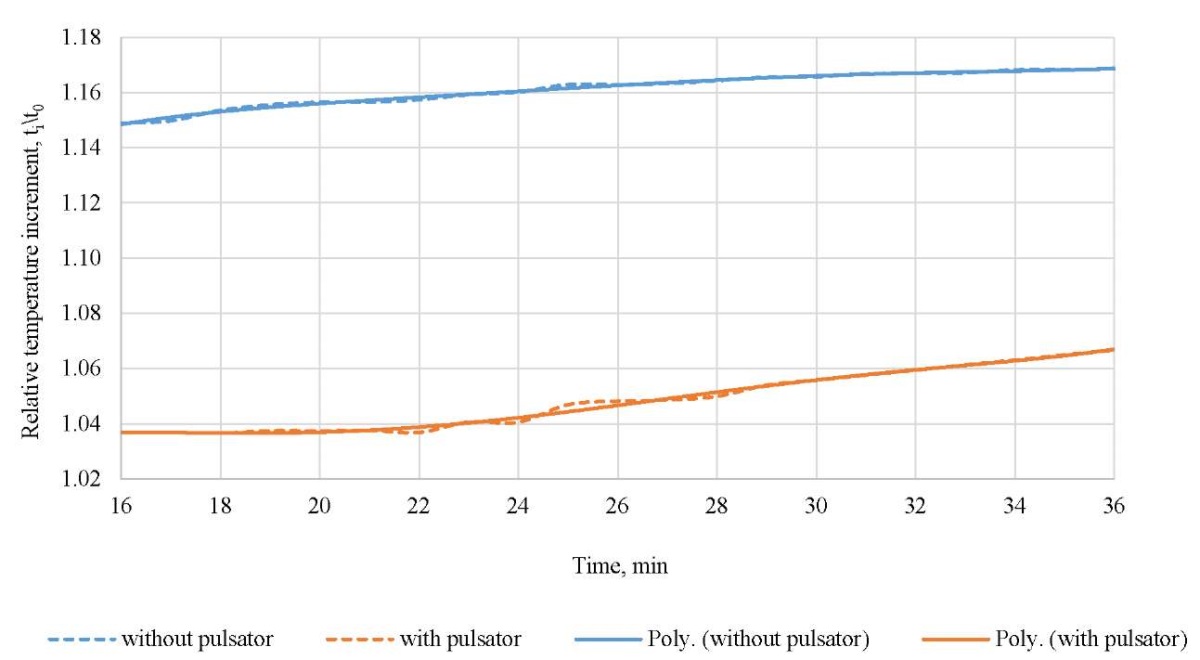
Fig. 7. Dependency graphs of the averaged values of relative temperature increment on time in stationary and pulsating modes (time range — 16–32 min.)
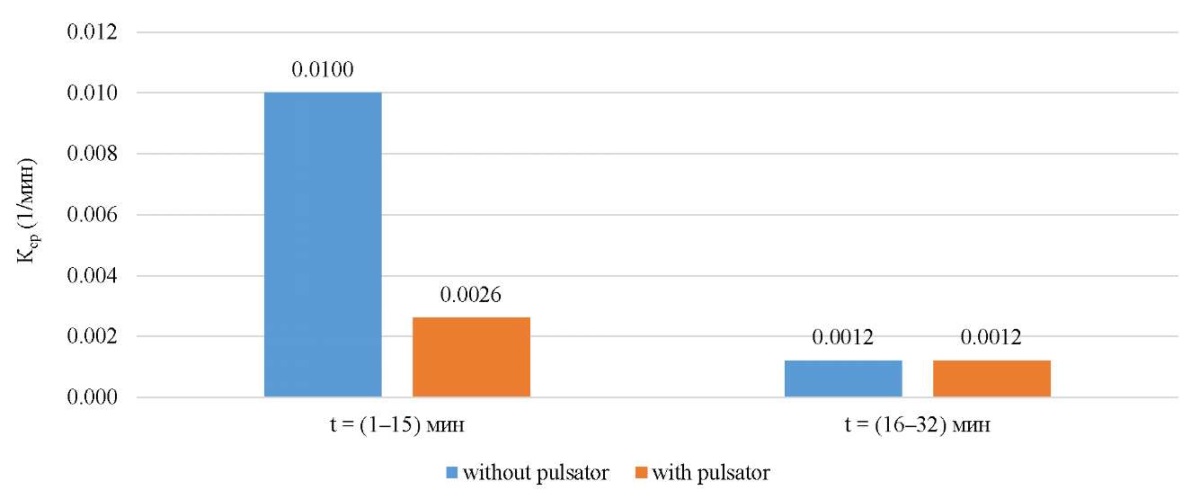
Fig. 8. Angular coefficients values at different time intervals
Discussion and Conclusion. The obtained dependencies of relative temperature increments with and without the pulsator allowed us to visually compare the processes of temperature increase and obtain the angular coefficient values for these two modes. The coefficients showed that the pulsating mode reduced the temperature rise by 3.8 times within the first 15 minutes at all measured points of the niche, proving the effectiveness of the proposed method. During the subsequent time period, temperature indicators stabilized in all cases and temperature in the niche increased slightly, both with and without the pulsator on.
The pulsation efficiency was observed at a distance of at least three diameters (L = 3d) of the niche under these conditions. We found that each time the pulsator was turned on, a steady increase in turbulent heat transfer occurred. Therefore, we can conclude that this method could be used to regulate the thermal load on various pieces of equipment and several technological processes.
The experiments conducted have allowed us to obtain initial information about the effectiveness of the above-mentioned method for heat and mass transfer. Further work will continue, and experiments will aim to obtain and analyze the dimensional and dimensionless characteristics of turbulent heat and mass transfer.
References
1. Varaksin AY, Protasov MV. The Effect of Gas Injection on the Protection of Body Surfaces Streamlined by a Two-Phase Flow. Teplofizika Vysokikh Temperatur. 2017;55(6):785–788. (In Russ.) https://doi.org/10.7868/S0040364417060151
2. Korkmaz ME, Gupta MK. A State of the Art on Cryogenic Cooling and Its Applications in the Machining of Difficult-to-Machine Alloys. Materials. 2024;17(9):2057. https://doi.org/10.3390/ma17092057
3. Mislibaev IT, Makhmudov A, Musurmanov ESh. Study of the Kinematics of the Air Flow Movement during Ventilation of Dead-End Working Places of the Mine. Academic Research in Educational Sciences. 2021;2(6):226–236. (In Russ.) https://doi.org/10.24412/2181-1385-2021-6-226-236
4. Kurnaeva SV, Bugaeva NS, Timofeev VN. Investigation of Heat and Mass Transfer Processes in Induction Duct Furnaces for Aluminum Production. In: Proceedings of the International Scientific and Practical Conference “Fundamental Scientific Research: Theoretical and Practical Aspects”. Kemerovo, May 25-26, 2016. In 3 volumes. Volume 3. Kemerovo: West Siberian Scientific Center; 2016. P. 121–125. (In Russ.)
5. Cherechukin VG. Explosion Hazard Assessment of Blind Drift Ventilation Efficiency. Mining informational and analytical bulletin (scientific and technical journal). 2016;(10):347–351. (In Russ.)
6. Smirnyakov VV, Rodionov VA, Smirnyakova VV, Orlov FA. The Influence of the Shape and Size of Dust Fractions on Their Distribution and Accumulation in Mine Workings When Changing the Structure of Air Flow. Journal of Mining Institute. 2022;253:71–81. (In Russ.) https://doi.org/10.31897/PMI.2022.12
7. Kuznetsova EA, Mikhina TV. Occupational Injuries in the Russian Federation: Analysis by Regions and Types of Economic Activity. Social and Labor Research. 2022;1(46):8–15. (In Russ.) https://doi.org/10.34022/2658-3712-2022-46-1-8-15
8. Aslamova ЕА, Aslamova VS, Blinova DS, Aslamov AA. Analysis of Production Trends Injuries in Russia in 2000–2020. Bulletin of the Angarsk State Technical University. 2021;1(15):175–180. (In Russ.)
9. Maltsev SV, Kazakov BP, Isaevich AG, Semin MA. Air Exchange Dynamics in the System of Large Cross-Section Blind Roadways. Mining informational and analytical bulletin (scientific and technical journal). 2020;(2):46–57. (In Russ.) https://doi.org/10.25018/0236-1493-2020-2-0-46-57
10. Tkachenko P. Occupational Injury Statistics in Russia in 2022. (In Russ.) URL: https://www.centrattek.ru/info/travmatizm-2022/ (accessed: 20.11.2024).
11. Bai Y, Yao Yi, Zheng Sh. Design and Analysis of Heat Exchanger Efficiency. Bulletin of Science and Practice. 2023;9(6):373–380. http://doi.org/10.33619/2414-2948/91/44
12. Nel AJH, Vosloo JC, Mathews MJ. Evaluating Complex Mine Ventilation Operational Changes through Simulations. Journal of Energy in Southern Africa. 2018;29(3);22–32. https://doi.org/10.17159/2413-3051/2018/v29i3a4445
13. Zender-Świercz E. Review of IAQ in Premises Equipped with Façade–Ventilation Systems. Atmosphere. 2021;12(2):220. https://doi.org/10.3390/atmos12020220
14. Darmanis M, Çakan M, Moustris KP, Kavadias KA, Nikas K-SP. Utilisation of Mass and Night Ventilation in Decreasing Cooling Load Demand. Sustainability. 2020;12(18):7826. https://doi.org/10.3390/su12187826
15. Tähtinen K, Lappalainen S, Karvala K, Remes J, Salonen H. Association between Four-Level Categorisation of Indoor Exposure and Perceived Indoor Air Quality. International Journal of Environmental Research and Public Health. 2018;15(4):679. https://doi.org/10.3390/ijerph15040679
About the Authors
A. E. FilinRussian Federation
Aleksandr E. Filin, Dr. Sci. (Eng.), Professor of the Technosphere Safety Department
4, Leninsky Prospekt, b. 1, Moscow, 119049
V. A. Filina
Russian Federation
Violetta A. Filina, Postgraduate Student of the Technosphere Safety Department
4, Leninsky Prospekt, b. 1, Moscow, 119049
S. V. Tertychnaya
Russian Federation
Svetlana V. Tertychnaya, Cand. Sci. (Eng.), Associate Professor of the Technosphere Safety Department
4, Leninsky Prospekt, b. 1, Moscow, 119049
I. Yu. Kurnosov
Russian Federation
Ilya Yu. Kurnosov, Senior Lecturer of the Technosphere Safety Department
4, Leninsky Prospekt, b. 1, Moscow, 119049
I. S. Kolbina
Russian Federation
Irina S. Kolbina, Postgraduate Student, Assistant of the Technosphere Safety Department
4, Leninsky Prospekt, b. 1, Moscow, 119049
D. E. Pronina
Russian Federation
Darya E. Pronina, Postgraduate Student of the Technosphere Safety Department, National University of Science and Technology MISIS
4, Leninsky Prospekt, b. 1, Moscow, 119049
Review
For citations:
Filin A.E., Filina V.A., Tertychnaya S.V., Kurnosov I.Yu., Kolbina I.S., Pronina D.E. Research Results of Heat and Mass Transfer in Conditions of Weak Aerodynamic Coupling with Pulsating Ventilation Mode. Safety of Technogenic and Natural Systems. 2025;9(1):22-31. https://doi.org/10.23947/2541-9129-2025-9-1-22-31. EDN: CMMJGA








































